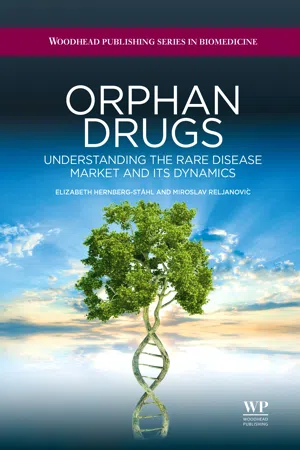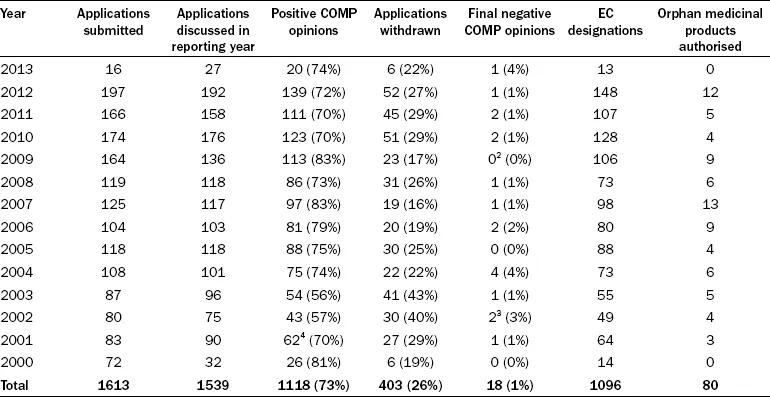
Orphan Drugs
Understanding the Rare Disease Market and its Dynamics
- 334 pages
- English
- ePUB (mobile friendly)
- Available on iOS & Android
Orphan Drugs
Understanding the Rare Disease Market and its Dynamics
About this book
This authoritative and comprehensive book makes the reader familiar with the processes of bringing orphan drugs to the global market. There are between 5, 000 and 7, 000 rare diseases and the number of patients suffering from them is estimated to be more than 50 million in the US and Europe. Before the orphan drug legislation enacted in the US in 1983, there was a limited interest from industry to develop treatment for very small patient groups. One of the difficulties is, of course, that similar levels of investment are needed from a pharmaceutical company to bring a drug to the market for both small and large patient groups.The journey from application of an orphan drug designation to a reimbursed market- approved drug is long and many obstacles occur during the journey.After reading the book, readers will: Understand who the players/stakeholders are in the rare orphan disease field and their specific needs and concerns: patients and patient organizations, researchers and treating physicians within the field, industry, regulatory and reimbursement bodies* Understand the strong partnership between the different players and the various initiatives to improve and increase access to treatment for patients; minimizing the gap between numbers of known diseases, orphan designations, approved drugs and paid drugs.The book also provides short practical case stories from patients and researchers, as well as representatives from industry and authorities on the challenges they came across in developing orphan drugs or getting access to orphan drugs.- A comprehensive overview of strategy, key activities and considerations of how to bring an orphan drug from concept to the market and make it available to patients- A source of updated information, news and trends for those who are already active in this fast-evolving field- Covers the global definitions and the criteria for getting an orphan drug designation in, for example, the US and Europe
Frequently asked questions
- Essential is ideal for learners and professionals who enjoy exploring a wide range of subjects. Access the Essential Library with 800,000+ trusted titles and best-sellers across business, personal growth, and the humanities. Includes unlimited reading time and Standard Read Aloud voice.
- Complete: Perfect for advanced learners and researchers needing full, unrestricted access. Unlock 1.4M+ books across hundreds of subjects, including academic and specialized titles. The Complete Plan also includes advanced features like Premium Read Aloud and Research Assistant.
Please note we cannot support devices running on iOS 13 and Android 7 or earlier. Learn more about using the app.
Information
Introduction











Table of contents
- Cover image
- Title page
- Table of Contents
- Copyright
- List of figures and tables
- Acknowledgements
- About the authors
- Chapter 1: Introduction
- Chapter 2: Orphan drugs and orphan drug legislation
- Chapter 3: Characteristics of rare diseases
- Chapter 4: Patient network and advocacy groups
- Chapter 5: Organisations and networks dedicated to rare diseases and orphan drugs
- Chapter 6: Policies and research funding
- Chapter 7: Designing robust clinical trials for orphan drugs
- Chapter 8: Market access procedures for orphan drugs
- Index